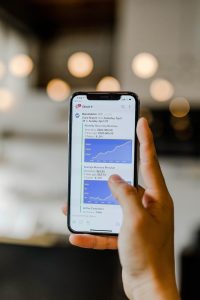CFD stands for Contract for Difference, it is a popular financial instrument that allows traders to speculate on the price movements of underlying assets without owning them. In the context of forex trading, CFDs are used to trade currency pairs, which are the most liquid assets in the financial markets. In this article, we will explain what CFDs mean in forex and how they work.
CFDs are derivatives, which means they derive their value from an underlying asset, such as a currency pair, stock, commodity, or index. When you trade a CFD, you are essentially entering into a contract with a broker or provider to exchange the difference in price between the opening and closing positions of the asset. For example, if you buy a CFD on the EUR/USD currency pair at 1.2000 and sell it at 1.2020, you would make a profit of 20 pips (0.0020) per unit of the currency pair.
The advantage of trading CFDs in forex is that you can profit from both rising and falling prices of the currency pair. In other words, you can go long (buy) if you think the price will go up or go short (sell) if you think the price will go down. This is in contrast to traditional forex trading, where you can only make a profit if the currency pair appreciates in value.
Another advantage of trading CFDs is that you can use leverage, which means you can open larger positions than your account balance would allow. For example, if your broker offers a leverage of 100:1, you can trade up to $100,000 worth of currency with a deposit of only $1,000. This can magnify your profits, but it also increases your risk of losses.
CFD trading in forex is also popular because it is more flexible than traditional forex trading. With CFDs, you can trade on margin, which means you only need to put up a fraction of the total value of the trade as collateral. This allows you to free up capital to trade other markets or to use for other purposes. You can also trade CFDs on a variety of platforms, including desktop, web, and mobile, which gives you access to the markets from anywhere and at any time.
However, trading CFDs in forex also carries risks. As with any leveraged product, your losses can exceed your initial deposit, which means you could lose more than you invested. This is why it is important to have a risk management strategy in place, such as setting stop-loss orders or using hedging techniques to minimize your exposure to market volatility.
In addition, CFD trading in forex is subject to market and counterparty risks. Market risk refers to the possibility of losing money due to changes in the price of the underlying asset. Counterparty risk refers to the possibility of losing money due to the default of the broker or provider. To minimize these risks, it is important to choose a reputable broker or provider that is regulated by a reputable authority, such as the Financial Conduct Authority (FCA) in the UK, the Australian Securities and Investments Commission (ASIC) in Australia, or the Securities and Exchange Commission (SEC) in the US.
In conclusion, CFDs in forex are a popular financial instrument that allows traders to speculate on the price movements of currency pairs without owning them. CFD trading in forex is flexible, can be done on a variety of platforms, and allows traders to profit from both rising and falling prices. However, it also carries risks, such as market and counterparty risks, and requires a risk management strategy to minimize losses. As with any investment, it is important to do your research and choose a reputable broker or provider that is regulated by a reputable authority.





